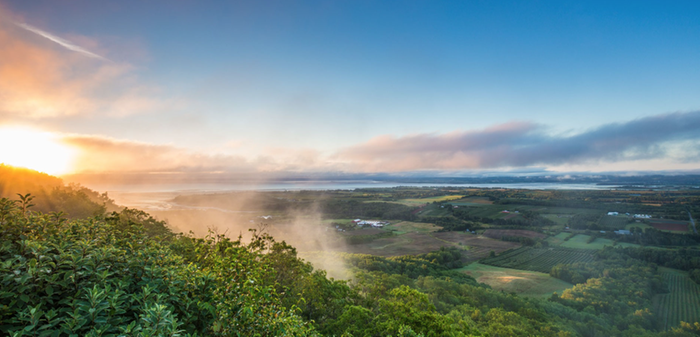
 9
9






 3
3




How Permies works: https://permies.com/wiki/34193/permies-works-links-threads
My projects on Skye: The tree field, Growing and landracing, perennial polycultures, "Don't dream it - be it! "
 5
5




 4
4




Weeds are just plants with enough surplus will to live to withstand normal levels of gardening!--Alexandra Petri
 6
6




 It’s been lovely to look back at the last couple years and compose a few highlights as we gear up for Spring-time. Last frost here is generally around May 24. We get very high winds off the bay, and the fog carries the salt to some degree, and so there are quite a few windbreak plantings in the neighbourhood. We’re a good 0.5-1.0 kilometre away from the shore, and are sheltered from the hardest weather which makes growing things easier, although we don’t have the heat, humidity, and protection like the Annapolis Valley.
It’s been lovely to look back at the last couple years and compose a few highlights as we gear up for Spring-time. Last frost here is generally around May 24. We get very high winds off the bay, and the fog carries the salt to some degree, and so there are quite a few windbreak plantings in the neighbourhood. We’re a good 0.5-1.0 kilometre away from the shore, and are sheltered from the hardest weather which makes growing things easier, although we don’t have the heat, humidity, and protection like the Annapolis Valley.


 5
5




 We had a hurricane in 2019 that felled a number of birches and poplar that sat right at the edge of this garden.
We had a hurricane in 2019 that felled a number of birches and poplar that sat right at the edge of this garden.

 5
5




 6
6




 The pitcher plant came with a few forest rhodo tag-alongs as well!
The pitcher plant came with a few forest rhodo tag-alongs as well!
![Filename: Veggie-Patch-soil-building-horse-manure-and-seaweed.-April-07.png
Description: [Thumbnail for Veggie-Patch-soil-building-horse-manure-and-seaweed.-April-07.png]](/t/211167/a/208052/Veggie-Patch-soil-building-horse-manure-and-seaweed.-April-07.png)
 4
4





 5
5





 6
6
















 4
4




Ian Fairweather wrote:,
Spotted maybe some form of marsh marigold about to bloom at a close by forested roadside stream bank. Wondering about foraging a few seeds. Can anybody ID?
How Permies works: https://permies.com/wiki/34193/permies-works-links-threads
My projects on Skye: The tree field, Growing and landracing, perennial polycultures, "Don't dream it - be it! "
 5
5
















 4
4




T. Smith wrote:Photo didn't load. If it is Caltha palustrus (spelling might be bad, marsh marigold), a group I once worked with nicknamed it "spaghetti root". BUT, you need to boil it, just like spaghetti, or it won't be nice to eat. Dig the roots, boil them, and you should be good to go.
How Permies works: https://permies.com/wiki/34193/permies-works-links-threads
My projects on Skye: The tree field, Growing and landracing, perennial polycultures, "Don't dream it - be it! "
 2
2




Nancy Reading:
I think it is Caltha palustris.
Well you learn something new every day! If you have experience foraging for this plant it would be great if you could share your knowledge here on Permies, maybe on the wild harvesting forum? It grows here reasonably profusely, but I'd never thought of eating it before.
T. Smith
Photo didn't load. If it is Caltha palustrus (spelling might be bad, marsh marigold), a group I once worked with nicknamed it "spaghetti root". BUT, you need to boil it, just like spaghetti, or it won't be nice to eat. Dig the roots, boil them, and you should be good to go.
 4
4




 may go back for one more clump, it seems to be thriving a week after transplant.
may go back for one more clump, it seems to be thriving a week after transplant.

![Filename: mountain-ash-transplant-leafing-out.jpeg
Description: [Thumbnail for mountain-ash-transplant-leafing-out.jpeg]](/t/211167/a/212009/mountain-ash-transplant-leafing-out.jpeg)
 2
2




 1
1




 2
2





 2
2




 2
2




 2
2





 2
2




 2
2
















 1
1




How Permies works: https://permies.com/wiki/34193/permies-works-links-threads
My projects on Skye: The tree field, Growing and landracing, perennial polycultures, "Don't dream it - be it! "
 2
2





 1
1




Nancy Reading wrote:I like the idea of elderberry lane! Mine actually set berries this year for the first time - not sure if it was the better weather we had in June, aor the different varieties coming to maturity. I let the birds have them - I tend to prefer to use the flowers anyhow.
I'm interested in the wild raisin viburnums. I think they may grow well here too - we are damp and acid although not particularly cold in winter or hot in summer. Obviously you find them worthwhile to transplant. My reading indicated that the fruit is sweet but more pip than fruit. How would you assess them?
 1
1




 1
1





|
Does this tiny ad smell okay to you?
The new purple deck of permaculture playing cards
https://www.kickstarter.com/projects/paulwheaton/garden-cards
|






